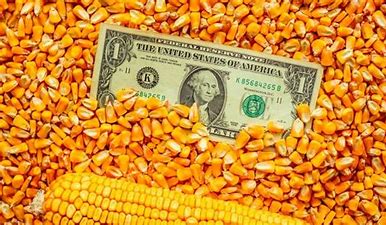New projection for U.S. crop reinforces estimate for strong corn exports this year
09/12/2022

Brazilian corn exports gained an even more favorable scenario after Pro Farmer crop tour – which monitored the main producing regions in the United States – pointed out a new drop in American production, which now is projected at 349.5 million tonnes in the 2022/23 season, 15 million tonnes less than the volume forecast by the U.S. Department of Agriculture in the August report.
According to Flávio Roberto de França Júnior, grain coordinator at Datagro, the new projection for the U.S. crop reinforces the estimate for a heated corn export in Brazil this year, projected at 40 million tonnes by the consultancy, close to the record of 42.7 million tonnes reached in 2019.
“There is demand from all over, whether it’s the conflict in Ukraine, the drought in the U.S. and Europe, or geopolitical issues that will cause U.S. sanctions on the Chinese,” Mr. França Júnior told Valor.
Foreign sales are indeed higher in 2022 as was already expected after last year’s harvest loss in Brazil. According to the Brazilian Association of Grain Exporters (Anec), in the 12 months through August, corn exports totaled 19.1 million tonnes. In the full year 2021, Brazil’s shipments totaled 20.6 million.
“Unlike soybeans, which have demand but no supply from Brazil [because of adverse weather in the South region], corn has availability and a surplus to export, and will maintain a favorable pace of shipments by the end of the year,” the analyst said.
At the beginning of August, Brazil and China signed a sanitary agreement that allows the sale of Brazilian corn to the Asian country this year, and not in 2023, as previously unveiled by the Ministry of Agriculture. Thus, Brazil gained a way out with the potential for strong demand. According to the USDA, China is expected to import 18 million tonnes in the 2022/23 harvest.
“We have a worldwide shortage of corn and an important new fact in this scenario: the release of exports to China. We cannot say how much they [the Chinese] will buy from Brazil, but they typically import large volumes,” Mr. França Júnior said.
André Pessôa, CEO of Agroconsult, also expects a larger volume leaving Brazil after the agreement with China. “We export to Asia, the Middle East, Latin America, and Europe. China will be another great engine for Brazilian sales, especially at a time when the U.S. and Ukraine are reducing their production,” said Mr. Pessôa, who projects Brazilian exports at 40 million tonnes this year.
But Paulo Molinari, an analyst at Safras & Mercado, is not so upbeat about Brazilian sales to the Asian country. He believes volumes will not be so large this year, and perhaps not even in 2023.
“The agreement signed for corn imports works as a protection for the first ship that takes the grains, ensuring that the Brazilian product will not be contaminated when it arrives in China. But this doesn’t mean that they [the Chinese] will buy now, because they are 30 days away from a 270 million tonnes harvest. The need for imports may come only in the first half of next year, after the end of the export season in Brazil,” Mr. Molinari said.
Still, the analyst expects a red-hot demand for Brazilian corn by the end of the year, especially from Europe, where crops have been suffering from the heat wave. “Europe has a harvest loss of 15 million to 20 million tonnes. Part of this demand will be supplied by wheat, and part by imports of Brazilian and Argentine corn.”
The estimate of Safras & Mercado indicates that Brazil will export 37 million tonnes, an amount that can grow as the demand increases and the exchange rate reaches a favorable level for foreign sales. “It could exceed 40 million tonnes. But for this to materialize, the country needs to ship on average 3.5 million tonnes per month in the last four months of the year. The exchange rate of R$5.2 to the dollar stimulates sales. We will have demand, but it is not possible to predict what the exchange rate will look like considering market volatility,” the Safras analyst said.
*By Paulo Santos — São Paulo
Source: Valor International
